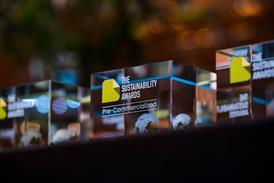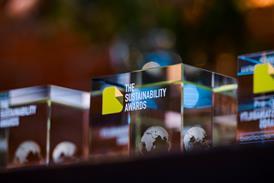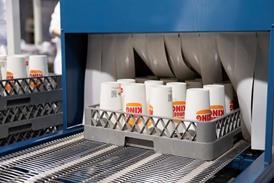
With less than twelve months until the EU Packaging and Packaging Waste Regulation (PPWR) takes effect – requiring all to be compliant or face large fees – organisations must act fast to future-proof their packaging portfolio and examine how emerging technologies can help. Anu Solanki, sustainability expert at PA Consulting, and Ryan McGinley, packaging design expert at PA Consulting, tell us more about how companies across the value chain can get it right.
Marks & Spencer recently announced their Extended Producer Responsibility (EPR) fees could reach £40 million annually. Many large companies will face similar fees of around £30-50 million, depending on their packaging portfolio. But companies that treat this regulation as a creative brief and embrace the opportunity can minimise fees, avoid forced change, ensure compliance, and help reimagine packaging.
With the right strategies in place, companies can lead in their category in innovation, sustainability, and brand expression and redesign for performance across the product lifecycle — from supply chain to shelf to recycling stream. They could also earn greater trust and loyalty from consumers looking for credible sustainability efforts. So how can they achieve this?
Regulations are complex and evolving
It’s worth taking stock of how regulations are shifting the responsibility for waste management onto businesses placing materials on the market. Responding to these regulations is complex. Firstly, regulations are not globally harmonised, and local nuances can be challenging to interpret. Although the focus is currently on PPWR, the UK Plastics Tax and state-specific US regulation also matter.
Secondly, EPR fees in the EU will now be eco-modulated, with easier to recycle materials having lower fees. The fees will vary region and be impacted by local waste infrastructure.
Thirdly, companies will need to provide justification on product vs packaging. Products such as mascara wands, sticky labels for fruit, and toothpaste boxes are called out as packaging – and companies must assess their portfolios based on examples like these. There’s also uncertainty around the integration of new materials innovations and recycling technologies, as businesses will often wait for regulatory clarity before making significant investments.
The current focus is on reducing EPR fees
There’s currently a push to keep materials at their highest value for as long as possible, including maximising material value from recycling. The principles are baked into recyclability assessments, which help packaging compliance.
But to align with evolving regulations, businesses can consider switching to monomaterials or those with a lower EPR fee, which will increase the recyclability of packaging and may reduce costs. Reducing contamination is also increasingly important, as the Design for Recycling guidelines penalise poor de-labelling and contaminants and specify how packaging can be ‘recycled at scale’. Companies should reassess product residue, switch to wash-off or floatable labels, low-migration inks and easy-removal or same-polymer components.
If packaging is too small to be recycled, such as daily contact lens cases and lip balms, nesting designs where multiples of the same material come together will increase size and recyclability. It’s important to remember that entire packaging portfolios must contain minimum level of recycled plastic by 2030: 30% for PET contact sensitive packaging; 10% for other plastic contact sensitive packaging; 30% for single use beverage bottles; and 35% for other plastic packaging.
Consumers need help reducing waste
Beyond this, businesses should provide clear instructions to help consumers dispose of packaging, as customers need help understanding its recyclability. EU-wide standardised labels and material identification will soon be coming into force and could include digital carriers for information on the material. Companies may need to reserve artwork space or create master icons to help the consumer recycle and improve sortation efficiencies at municipal recycling facilities.
Refill schemes can lower the amount of material waste – but need to be desired and actually used by consumers. Consider how a refill scheme could be made fun and appealing, rather than something that is ‘just good for the environment.’
There are some unknowns
The move toward a circular economy is undoubtedly a positive change – but unintended consequences may still arise from the focus on recycling. Over the last five years, natural packaging materials have proliferated, including those based on starch, mycelium, and seaweed. With PPWR, and an increased focus on recycled plastics, innovation in this field may slow, and specific use cases may need revisiting.
Whilst there are plenty of ways to get onboard with PPWR, less sustainability-focused companies may also decide to pay higher EPR fees and pass costs down. Alternatively products may be withdrawn in certain geographies.
And finally, unknowns still remain. For example, chemical toxicity. What happens to the build-up of additives and other components when a polymer is repeatedly recycled? There’s a drive to use more paper, but how long can we rely on trees before alternative fibres, from faster growing crop, are needed?
If you’re putting packaging in the market, the evolving regulatory landscape will undoubtedly impact you. With the countdown on, the question is how quickly can you now respond. Developing a strategy to reduce waste, leverage new technologies, and bring consumers along on the journey will help minimise exposure to fines, ensure compliance, and lead the way in the move towards packaging compliance and a circular economy.
If you liked this story, you might also enjoy:
The ultimate guide to the Packaging and Packaging Waste Regulation in 2025
How are the top brands progressing on packaging sustainability?
Everything you need to know about global packaging sustainability regulation in 2025
The key to increasing the use of reusable packaging in supermarkets

















No comments yet